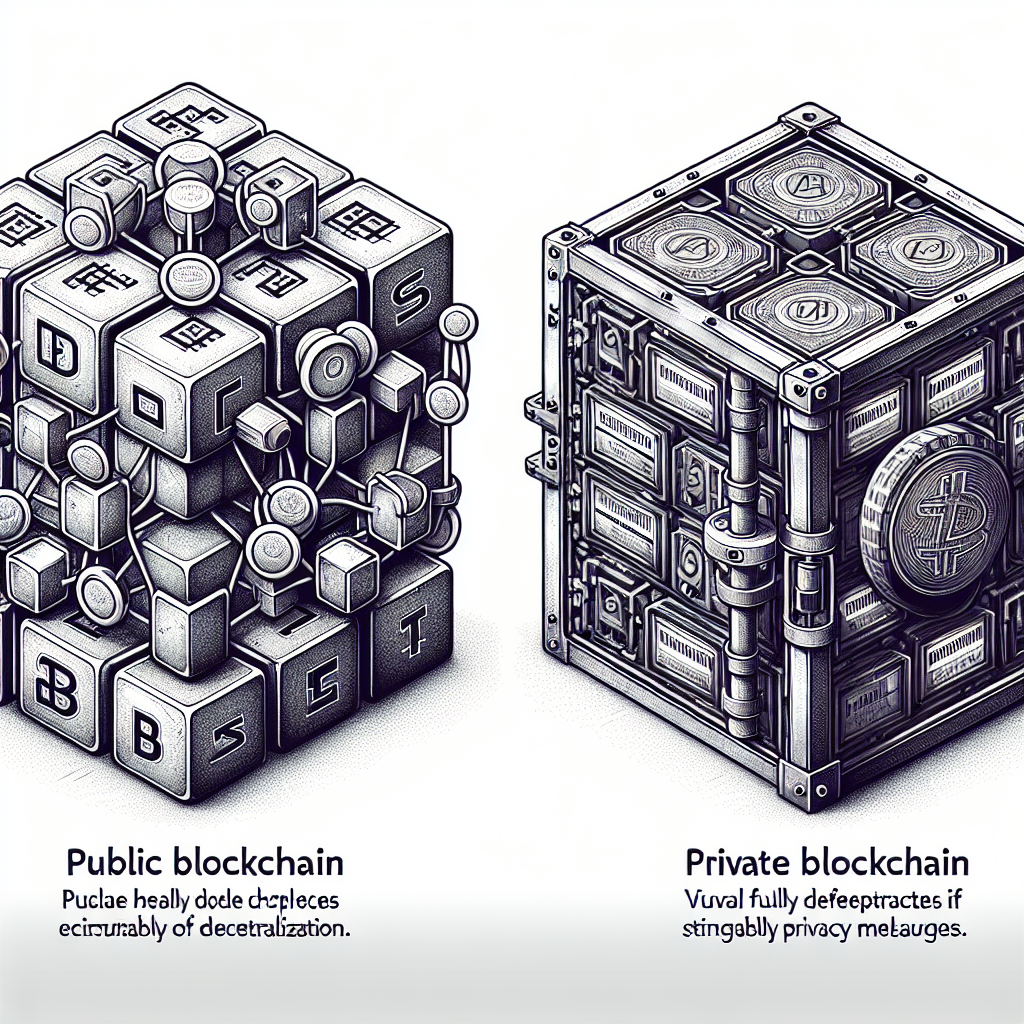Analyzing Blockchains: Public and Private, Their Unique Challenges
Blockchain Technology Interoperability, Private Blockchains, Public Blockchains, ScalabilityDistribution and decentralization are fundamental to the construction of public blockchains, enabling open access and participation for everyone.
External communications are typically restricted within private blockchains for reasons of information protection and security, tailored for a select group of authorized users.
Intended for universal utilization, public blockchains are accessible to all. Meanwhile, designed for a selective user base, private blockchains cater to groups with explicit permissions. The fortification of ownership transfer and value storage on public blockchains necessitates addressing challenges including security, scalability, and energy consumption, among others. Entities deliberating over private blockchain implementation must consider the expenses of acquiring adept programmers, as well as the security of the data they harbor.
Public blockchains, accessible by design, invite widespread participation, aiming to boost adoption among users. Despite their potential for decentralized utility, these projects often grapple with issues of scalability and security. Developers strive to draw network participants by enhancing security, decentralization, energy efficiency, and use cases, although trade-offs between these factors are frequently necessary.
Scalability
The adaptability of public blockchains to fluctuations in usage is a primary concern, with limitations arising from the number of manageable transactions. Excessive traffic leads to congestion, while insufficient use can compromise security.
The ability of blockchains to adjust to varying levels of traffic is crucial.
Interoperability
Blockchain interoperability pertains to communication across different blockchains. Initially overlooked with Bitcoin’s launch, it became imperative as more cryptocurrencies emerged. Protocols like Polkadot and Cosmos facilitate data and value exchange between otherwise non-communicative blockchains, reflecting the industry’s adaptive efforts.
Decentralization
A major appeal for many involved in public blockchains is decentralization, where users, not a central authority, control the blockchain and its data.
Typically achieved by extensively distributing the ledger, decentralization empowers participants. Yet, increased decentralization can undermine scalability and security, necessitating additional safeguards to uphold security standards.
Energy Consumption
While Bitcoin initially tackled security issues with a slow proof-of-work model, this approach required broad participation, which later raised concerns over energy consumption. Recognizing the substantial energy demands of such networks, governments and environmental advocates have expressed growing concern over their scalability.
The security of Bitcoin’s network was significantly bolstered by speculators and investors, leading to the creation of energy-intensive mining farms and ultra-fast networks.
Partly addressing energy concerns, Ethereum transitioned to proof-of-stake (PoS) consensus. However, PoS links security to users staking capital for trust, which can impair decentralization.
Security
In public blockchains, the safeguarding of transferred value demands stringent security. The number of users plays a critical role; networks with insufficient nodes are vulnerable to attacks.
Enhancing a blockchain’s security often leads to a decrease in decentralization and scalability due to inherent design trade-offs in public blockchains.
Blockchain technology is reshaping data transfer and security methodologies. While private blockchains cater to centralization within organizations, addressing expenses and security issues is necessary. As of December 2024, only a limited number of skilled technicians are qualified to develop and manage these systems.
Public blockchains, on the other hand, are open and decentralized, accessible for general use beyond just cryptocurrencies. Their transparency necessitates a careful balance between security, energy efficiency, scalability, decentralization, and interoperability, each of which interacts with and impacts the others.
Targeting
As companies increasingly integrate private blockchains into their systems, they become prime targets for cybercriminals. These blockchains could contain sensitive data, such as client information or intellectual property, necessitating robust security measures.
Skill Availability
A shortage of skilled professionals hinders the development and maintenance of private blockchains, though awareness is fueling an increase in qualified experts. O Net Online forecasts a faster-than-average growth in this field through 2033, driven by the increasing corporate demand for blockchain solutions.
Costs
The financial investment in developing, migrating, maintaining, and upgrading blockchains is considerable. Blockchain-as-a-service companies offer solutions to alleviate these costs, though they introduce additional expenses.
Bitcoin is classified as a public blockchain, meaning unrestricted access and participation are available to everyone.
Private blockchains are typically limited to a single organization, while consortium blockchains function as private ones shared among multiple organizations.
Ethereum is also a public blockchain, granting open access and participation to all users.
Public blockchains are used primarily for cryptocurrencies, but they serve other purposes as well, with their open-source nature posing significant security challenges. Adjustments in energy use, scalability, decentralization, and interoperability are necessary, as changes in one aspect often affect the others.
